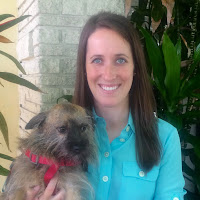 Pet Periodontal Disease Prevention
Pet Periodontal Disease Prevention
Periodontal disease is the most common clinical condition
affecting adult dogs and cats. It is a progressive disease that can cause bad
breath, oral pain, and spread of bacteria from the mouth to the rest of the
body. Fortunately, periodontal disease is preventable with both home dental
care and routine veterinary dental care.
What is periodontal
disease?
Periodontal disease is the destruction of bone, gum tissue,
and structures that hold the teeth in place. Just like in humans, periodontal
disease starts out as a bacterial film on the teeth called plaque. The bacteria
can then spread causing gingivitis, infection and inflammation below the
gumline, and eventually destruction of bone leading to tooth loss.
How do I know if my
pet has periodontal disease?

Periodontal disease occurs below the gumline where it is not
visible. In advanced stages of the disease, you may notice that your pet has
bad breath, loose, teeth, and a painful mouth.
If your pet’s teeth appear white and clean, this does not mean that periodontal
disease is not present!
The only way to identiy or prevent periodontal disease is
through regular veterinary dental exams and cleanings. Anesthesia is required
to assess your pet’s dental health below the gumline!
The KEY to
periodontal disease is PREVENTION
The two components to preventing periodontal disease in your
pet are home dental care and annual veterinary dental care.
·
Daily brushing remains the gold standard
recommended by veterinary dentists to prevent plaque and slow progression of
periodontal disease. Many pets can be trained to accept and even like
brushing. It is important to begin a
brushing routine when your pet’s mouth is clean and healthy (a pet with oral
pain may develop a negative association with brushing). Offer a positive reinforcement, such as a
treat or toy, following brushing. Use a soft bristled toothbrush and a
palatable pet toothpaste.
·
Annual veterinary dental cleanings under
anesthesia are an important part of your pet’s oral health routine. During this
procedure, the veterinarian will visually examine each tooth and probe for
pockets, which can result from periodontal disease. Dental radiographs (x-rays)
can also be taken to look for dental disease below the gumline and to evaluate
diseased teeth. An ultrasonic scaler is used to clean the visible area of the
teeth and under the gums. Finally, the
teeth are polished to eliminate the rough surface created by scaling. When this
procedure is performed regulary, beginnings of periodontal disease can be
addressed immediately before it causes extensive and expensive damage.
Lauren Vezzosi












